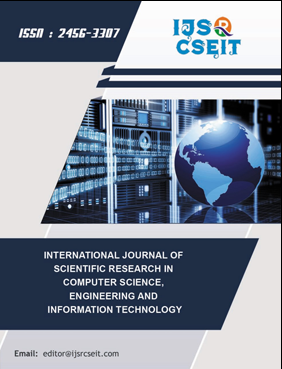Detection and Classification on Plant Disease using Deep Learning Techniques
DOI:
https://doi.org/10.32628/CSEIT2410333Keywords:
Plant Diseases Detection and Classification, Transfer Learning, Deep Learning, DenseNet-121, VGG-16Abstract
Plant diseases are a major problem for the agriculture industry because they can cause large crop losses and jeopardize food security. Deep learning approaches have demonstrated encouraging results in automating plant disease diagnosis and detection in recent years. In the context of plant disease diagnosis, this study examines the efficacy of two well-known convolutional neural network architectures: DenseNet121 and VGG16. Plant Village datasets are used for pretrained and fine-tuning of the DenseNet121 and VGG16 architectures, respectively. The dataset includes Images of both healthy and sick plants. To guarantee the models' resilience and generalizability, the dataset include 15 different classes and 4 types of plants namely Tomato, Potato and Pepper Bell. We compare the accuracy, precision, recall, and F1-score of DenseNet121 and VGG16 for plant disease classification through extensive testing and analysis. To determine if they are practically feasible for use in real-world applications, we also examine their model complexity and computing efficiency. Our findings show that DenseNet121 and VGG16 can both correctly diagnose plant diseases in a variety of species. Although DenseNet121 outperforms VGG16 in terms of overall accuracy and computational efficiency, both models obtain high accuracy rates. Additionally, DenseNet121 has superior generalization performance, especially in identifying uncommon or underrepresented illness classes. All things considered, this work emphasizes the promise of deep learning models-DenseNet121 in particular-as useful instruments for automated plant disease identification and points to directions for further investigation to improve the efficiency and scalability of such systems for real-world use in agriculture.
📊 Article Downloads
References
Eunice, J., Popescu, D. E., Chowdary, M. K., & Hemanth, J. (2022). Deep learning-based leaf disease detection in crops using images for agricultural applications. Agronomy, 12(10), 2395. DOI: https://doi.org/10.3390/agronomy12102395
Adnan, F., Awan, M. J., Mahmoud, A., Nobanee, H., Yasin, A., & Zain, A. M. (2023). EfficientNetB3-Adaptive Augmented Deep Learning (AADL) for Multi-Class Plant Disease Classification. IEEE Access. DOI: https://doi.org/10.1109/ACCESS.2023.3303131
Abinaya, S., Kumar, K. U., & Alphonse, A. S. (2023). Cascading Autoencoder with Attention Residual U-Net for Multi-Class Plant Leaf Disease Segmentation and Classification. IEEE Access. DOI: https://doi.org/10.1109/ACCESS.2023.3312718
Balafas, V., Karantoumanis, E., Louta, M., & Ploskas, N. (2023). Machine learning and deep learning for plant disease classification and detection. IEEE Access. DOI: https://doi.org/10.1109/ACCESS.2023.3324722
Rani, K. A., & Gowrishankar, S. (2023). Pathogen-based Classification of Plant Diseases: A Deep Transfer Learning Approach for Intelligent Support Systems. IEEE Access.
Masood, M., Nawaz, M., Nazir, T., Javed, A., Alkanhel, R., Elmannai, H., ... & Bourouis, S. (2023). MaizeNet: A deep learning approach for effective recognition of maize plant leaf diseases. IEEE Access. DOI: https://doi.org/10.1109/ACCESS.2023.3280260
Peyal, H. I., Nahiduzzaman, M., Pramanik, M. A. H., Syfullah, M. K., Shahriar, S. M., Sultana, A., ... & Chowdhury, M. E. (2023). Plant Disease Classifier: Detection of Dual-Crop Diseases using Lightweight 2D CNN Architecture. IEEE Access. DOI: https://doi.org/10.1109/ACCESS.2023.3320686
Zhong, Y., Huang, B., & Tang, C. (2022). Classification of cassava leaf disease based on a non-balanced dataset using transformer-embedded ResNet. Agriculture, 12(9), 1360. DOI: https://doi.org/10.3390/agriculture12091360
Agarwal, M., Singh, A., Arjaria, S., Sinha, A., & Gupta, S. (2020). ToLeD: Tomato leaf disease detection using convolution neural network. Procedia Computer Science, 167, 293-301. DOI: https://doi.org/10.1016/j.procs.2020.03.225
Arshad, M. S., Rehman, U. A., & Fraz, M. M. (2021, May). Plant disease identification using transfer learning. In 2021 International Conference on Digital Futures and Transformative Technologies (ICoDT2) (pp. 1-5). IEEE. DOI: https://doi.org/10.1109/ICoDT252288.2021.9441512
Malik, A., Vaidya, G., Jagota, V., Eswaran, S., Sirohi, A., Batra, I., ... & Asenso, E. (2022). Design and evaluation of a hybrid technique for detecting sunflower leaf disease using deep learning approach. Journal of Food Quality, 2022, 1-12. DOI: https://doi.org/10.1155/2022/9211700
Upadhyay, S. K., & Kumar, A. (2022). A novel approach for rice plant diseases classification with deep convolutional neural network. International Journal of Information Technology, 1-15. DOI: https://doi.org/10.1007/s41870-021-00817-5
Ahmed, M., & Ahmed, A. (2023). Palm tree disease detection and classification using residual network and transfer learning of inception ResNet. Plos one, 18(3), e0282250. DOI: https://doi.org/10.1371/journal.pone.0282250
Downloads
Published
Issue
Section
License
Copyright (c) 2024 International Journal of Scientific Research in Computer Science, Engineering and Information Technology

This work is licensed under a Creative Commons Attribution 4.0 International License.




